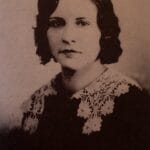Soaring Grace: Maria Tallchief’s Quarter
The Maria Tallchief quarter, released in 2023, is more than just currency; it’s a tribute to a trailblazing American icon. This commemorative coin celebrates Maria Tallchief, America’s first Native American prima ballerina, whose captivating performances and unwavering dedication left an enduring mark on the world of dance. This gleaming tribute honors her talent, her perseverance, and the powerful legacy she forged as a Native American woman in a predominantly white art form.
A Dancer’s Journey: From Oklahoma to the World Stage
Born in 1925 on Osage Nation land in Fairfax, Oklahoma, Tallchief’s path to greatness was far from typical. In an era of limited opportunities for Native Americans, particularly in the arts, she dared to dream big. With fierce determination, she pursued her passion for ballet, ultimately achieving a level of artistry few attain. Her journey from Oklahoma to the world’s most prestigious ballet companies is a testament to her exceptional talent and unwavering commitment.
The quarter’s design itself is a miniature masterpiece. It captures Tallchief mid-performance as the legendary Firebird, a role she embodied with electrifying energy. The dynamic pose showcases her athleticism, grace, and the fiery spirit that propelled her to stardom. This captured moment, forever preserved on this small silver disc, also acknowledges her Osage heritage with the inscription of her Osage name, “Wah-Wah-Tay-See” (Woman of Two Standards). This detail underscores her cultural pride and the importance of representation, likely serving as a source of immense pride for many Native Americans. Seeing her image and name on American currency is a powerful symbol of progress, inclusivity, and the invaluable contributions of Native Americans to American culture.
Interested in reading more about other inspiring women? Learn about Loretta Perfectus Walsh, an American artist, author, musician, and educator, and Margaret Shippen, a prominent socialite and wife of Benedict Arnold during the American Revolutionary War.
Why is Maria Tallchief on a Quarter? Honoring a Legacy
Maria Tallchief’s presence on the quarter goes beyond simply recognizing a talented dancer; it acknowledges her trailblazing journey and the barriers she overcame. As a Native American woman in the world of ballet, she faced prejudice and doubt, yet she persevered, becoming the first Native American prima ballerina. This achievement resonated far beyond the stage, symbolizing strength, resilience, and the power of representation for aspiring Native American artists.
The U.S. Mint’s decision to feature Tallchief is a powerful statement, acknowledging her contributions not only to dance but also to American culture as a whole. By immortalizing her on a quarter, her story continues to be told, inspiring generations to come. It’s a tangible symbol of her talent, her perseverance, and the profound impact she had on the arts.
Some ongoing research explores the complexities of tribal affiliations and historical records of that era, enriching our understanding of the past. This doesn’t diminish Tallchief’s accomplishments but rather adds another layer to her already remarkable story.
Those who witnessed Tallchief’s performances describe her remarkable grace, athleticism, and captivating stage presence. She combined the elegance of ballet with a powerful storytelling ability, leaving audiences spellbound. While we can only imagine her performances today, descriptions and recordings offer glimpses into her extraordinary artistry.
The Maria Tallchief quarter embodies more than just a ballerina on a coin; it represents a woman who defied expectations, shattered barriers, and became a symbol of hope and inspiration. It serves as a reminder that even small things can hold profound meaning and that everyone, regardless of background, possesses the potential for greatness.
Maria Tallchief’s Earnings: A Glimpse into a Ballerina’s Finances
Determining Maria Tallchief’s exact earnings is a challenge due to the scarcity of financial records from that era. However, examining the general landscape of ballet salaries in the mid-20th century can provide some insight. It’s important to note that any figures are estimates, as her actual income likely varied based on roles, companies, endorsements, and guest appearances.
During Tallchief’s time, ballet wasn’t as lucrative as it can be today. Even prominent dancers likely earned modest salaries compared to other performers. A principal dancer might have lived comfortably, but their income probably didn’t rival that of Hollywood stars or famous musicians. Moreover, a dancer’s earnings fluctuated based on season length and the number of performances.
Beyond base salaries, dancers might have received bonuses for demanding roles or extended tours. Endorsements or side ventures may have also contributed to their overall financial well-being. Further research could illuminate these aspects of Tallchief’s financial situation.
While precise figures remain elusive, Tallchief’s true wealth lies in her enduring legacy. Her artistic achievements, groundbreaking career, and role as a cultural icon transcend monetary value. The quarter itself stands as a testament to her significance, a recognition far surpassing any financial measure. Ongoing research may uncover more details about dancer salaries during her time, providing a more complete understanding of her financial picture.
Who is on the Front of the Maria Tallchief Quarter? A Familiar Face
The obverse (front) of the Maria Tallchief quarter features George Washington, a long-standing tradition for U.S. quarters. This familiar image of the first president is a constant across circulating quarters.
The reverse (back) of the coin is where you’ll find Maria Tallchief, captured in a dynamic mid-leap, embodying her iconic Firebird role. This powerful image celebrates her talent, legacy, and the barriers she broke as America’s first Native American prima ballerina. Her appearance on the quarter isn’t just about artistic brilliance; it’s about acknowledging her impact on dance and her representation of Native American women.
The Maria Tallchief quarter is part of the American Women Quarters™ Program, a multi-year initiative celebrating the accomplishments of American women. This program represents a shift towards more inclusive and representative currency, recognizing the significant contributions of women throughout American history.
While numismatic experts may debate the design process specifics, the depiction of Maria Tallchief undeniably connects her Osage heritage with her groundbreaking ballet career. Further research could reveal deeper connections between the Firebird imagery and her Native American identity.
The next time you encounter a Maria Tallchief quarter, remember the remarkable woman depicted on the reverse. It’s a tangible piece of history, a celebration of talent, perseverance, and the power of representation. For more information on the American Women Quarters Program and the women it honors, visit the United States Mint’s website.









